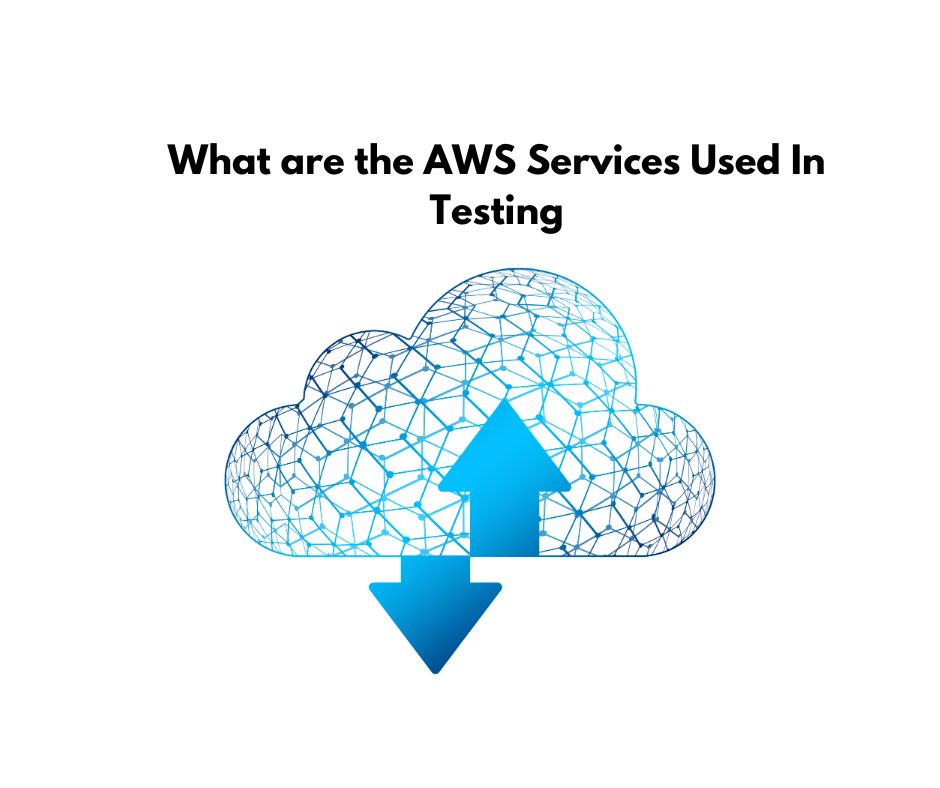As businesses rely more on cloud technology, AWS services for testing applications have become crucial. AWS offers a scalable and reliable infrastructure, making it the ideal testing platform. This section post discusses the benefits of using AWS services for testing, the key AWS services used in testing, strategies to monitor and improve test performance, security considerations when using AWS tests, and solutions to common problems.
AWS testing is vital for ensuring applications function properly before being deployed to production environments. Through automated or manual methods, businesses can validate the functionality, performance, and security of applications or services built on AWS. This method helps identify issues early on and prevents problems for customers.
A significant benefit of AWS testing is improved application quality and reliability. Regular tests throughout development cycles help identify potential issues earlier, allowing development teams to fix them quickly, ensuring customer satisfaction. Automated testing during development cycles speeds up time-to-market and reduces costs associated with emergency bug fixes later down the line.
To get started with AWS testing, consider adopting services such as Amazon EC2 instances, which provide compute capacity needed to run automated tests. Amazon S3 buckets allow results from past runs to be stored without additional hardware setup. Amazon CloudWatch enables performance metrics monitoring such as memory usage, and Amazon VPC allows secure connections between various components within an environment while still allowing access from outside sources.
Continuous integration and delivery capabilities are also necessary when utilizing these services. Automation tools like Jenkins and Selenium streamline processes involved within software engineering projects, leading to higher efficiency gains. Adopting a quality approach through the usage of technologies such as Test Driven Development ensures that good engineering practices are followed at all times, leading to better end-user experiences.
Security considerations are critical when running these types of tests. Make sure data is encrypted correctly along with setting up firewalls around networks used by testers/developers, allowing only authorized persons access to view results/debugging information. External penetration testers may also be necessary, depending on the scope of the project at hand.
AWS testing methods provide numerous advantages for businesses looking to expand their operations in the cloud computing space. Improved application quality, faster times to market, and cost savings are a few of the benefits. A proactive approach developing maintaining solutions coupled with careful consideration security measures are necessary to reap the rewards fully offered by AWS testing methods.
Using AWS To Help Test Your Apps And Systems
Amazon Web Services (AWS) is a cloud computing platform utilized to test apps and systems. Developers can easily and swiftly set up test environments through AWS, which reduces costs associated with manual testing, along with providing automation benefits and scalability advantages. Kelly Technologies is proud to offer the best AWS Training in Hyderabad.
To begin using AWS for testing, create an account with Amazon Web Services and establish the necessary environment variables for your test system. Then, start developing test cases using AWS tools such as the API and Command Line Interface (CLI). These tools automatically generate and configure test environments within minutes, requiring minimal effort from developers.
Businesses can use AWS’s load testing services to simulate traffic on their applications or services under various conditions. This allows them to evaluate performance and identify areas needing improvement before deploying software into production environments. Additionally, firms can leverage continuous integration methods through which they can run a suite of tests automatically on each successful build. This reduces time spent fixing problems after deployment due to dependency conflicts.
Finally, businesses may use UI testing frameworks such as Appium to automate UI interactions within web browsers across multiple operating systems. This eliminates time spent manually verifying functionality across different OS platforms prior to releasing an application to production environments, saving time and money. Overall, leveraging AWS Testing practices enables businesses to verify performance, security, and scalability features before pushing live to the customer-facing marketplaces, resulting in higher quality experiences for customers using these products or services.
Testing With AWS Benefits And Challenges
Testing with AWS provides an efficient and cost-effective way to ensure applications and services are working as expected. Businesses can leverage multiple AWS services to create a simulated testing environment and take advantage of test automation. However, controlling, scaling, and monitoring tests through this platform does pose challenges.
One primary benefit of leveraging AWS for software testing is the automation of tests using cloud services. Automated testing validates an application’s functionality, performance, and security quickly and reliably, reducing costs associated with manual labor or hardware requirements. Businesses can also benefit from cost savings compared to traditional models for software testing.
AWS Testing offers a scalable and reliable infrastructure to build and test applications in an agile manner, without having to provision hardware upfront or manage physical resources. AWS API or Command Line Interface (CLI) enables organizations to conduct manual or automated tests much more quickly, saving both time and money.
However, controlling, scaling, and monitoring tests with AWS requires careful consideration to ensure secure data transfer between systems. Also, creating a hybrid environment for testing requires additional planning to optimize results from these types of projects.
Familiarizing oneself with the AWS API and Command Line Interface will help become a confident user administrator on this platform, reaping all its benefits while avoiding potential pitfalls. AWS Testing stands out over traditional methods due to its scalability, reliability, and automation capabilities. Therefore, many organizations turn to cloud computing solutions such as Amazon Web Services (AWS) Testing for their software needs.
Simplifying Testing Workflows With Cloud Services
Testing workflows can be complex and time-consuming, particularly when dealing with large-scale solutions. However, cloud services, such as Amazon Web Services (AWS), have simplified the process and provided a cost-effective solution for developers and testers alike. AWS enables the automation of infrastructure deployments, the integration of different tools and platforms for testing on the cloud, the use of cloud clustering to test large solutions, cost optimization due to cost-effective solutions, provisioning and de-provisioning of resources, as well as managing flexibility and scalability in the test automation process.
Cloud-based testing tools provide faster results than traditional methods. Tests that may take days or weeks to run in an on-premise environment can be completed in just minutes using AWS. This enables teams to use multiple virtual machines simultaneously, reducing the amount of time it takes to debug problems. Furthermore, AWS Testing allows businesses to validate the functionality, performance, and security of an AWS application or service using manual or automated methods.
The Moto AWS SDK also enables users to mock up AWS services without provisioning actual resources, which helps save hundreds of dollars in cloud costs while still providing accurate testing results. Additionally, numerous APIs, such as Amazon API Gateway, allow you to rapidly create APIs that are used by your customers, while Amazon CloudWatch provides real-time monitoring capabilities that help identify potential issues quickly before they become a problem. Finally, Command Line Interface tools allow for easy automation, allowing developers and testers alike more control over their applications without having to learn complex scripting languages like Python or Ruby on Rails.
Simplifying testing workflows with Cloud Services has revolutionized how software is tested today, making it simpler than ever before with faster, more efficient results at a fraction of the cost!
Best Practices For Using AWS For Testing
Testing applications is an essential part of any software development process, and AWS provides a perfect solution for testing applications in the cloud. AWS offers a range of tools and services that can be used to test applications quickly and easily, ensuring that your application functions as expected. In this section, we’ll discuss the best practices for using AWS for testing.
First, it’s important to understand what AWS is and its advantages when it comes to testing purposes. With AWS, you can set up your environment in minutes with no upfront costs or long-term commitments, allowing you to start testing immediately. Additionally, with its scalability capabilities, businesses can scale up their resources according to their needs without worrying about overloading the system or incurring additional costs.
Another important practice when using AWS for testing is acquiring the necessary skillset required to use the various services offered by Amazon Web Services (AWS). You should have a good understanding of how each service works and how they interact with each other in order to use them effectively for your tests. Additionally, familiarize yourself with best practices such as proper maintenance of your setup, scaling up/down resources according to requirements, etc., which will help ensure successful implementation of tests on AWS infrastructure.
AWS also offers continuous integration (CI) and continuous delivery (CD) capabilities, which make it easy for teams to deploy new builds frequently without having any manual steps involved in between deployments or test runs. This saves time and effort during the process by speeding up test cycles and releasing quality products faster into production environments. This makes it easier for businesses to not only conduct automated tests but also gain insights from them quickly and accurately, enabling them to make informed decisions about their product releases faster than ever before!
Finally, one major benefit of AWS Testing is cost savings compared to traditional on-premise solutions. Since businesses don’t need physical infrastructure, they save money while still being able to access reliable cloud-based technology, thereby helping focus more on development rather than having to worry about costly hardware upkeep and management costs associated with traditional solutions!
This article in the glaadvoice should have given you a clear idea about AWS. Using AWS Testing provides a cost-effective way of ensuring application quality while providing reliability and scalability needed by modern-day startups and enterprises alike, so they can develop new features faster while still getting accurate feedback from real users in production environments!




